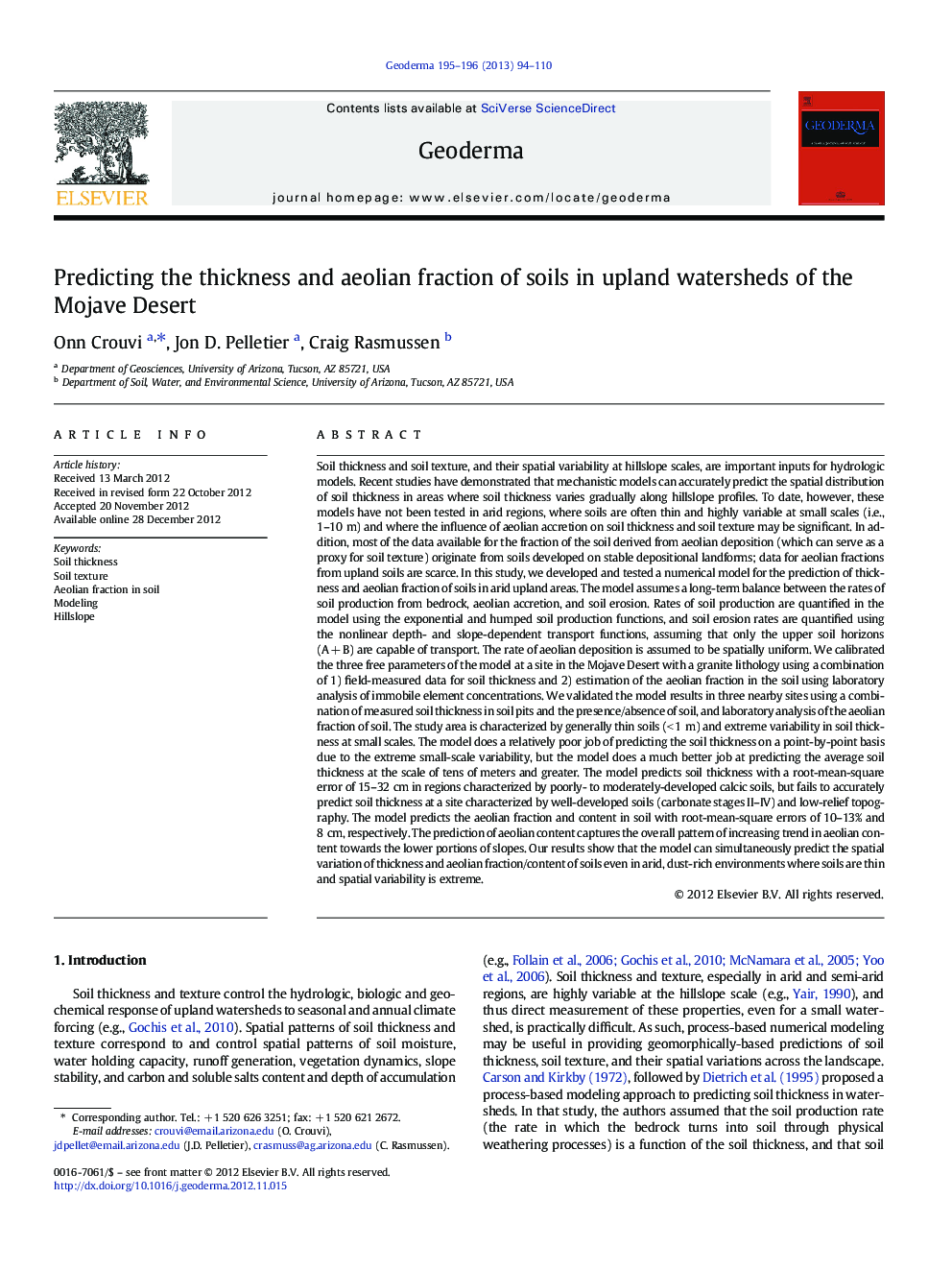| کد مقاله | کد نشریه | سال انتشار | مقاله انگلیسی | نسخه تمام متن |
|---|---|---|---|---|
| 4573546 | 1629489 | 2013 | 17 صفحه PDF | دانلود رایگان |

Soil thickness and soil texture, and their spatial variability at hillslope scales, are important inputs for hydrologic models. Recent studies have demonstrated that mechanistic models can accurately predict the spatial distribution of soil thickness in areas where soil thickness varies gradually along hillslope profiles. To date, however, these models have not been tested in arid regions, where soils are often thin and highly variable at small scales (i.e., 1–10 m) and where the influence of aeolian accretion on soil thickness and soil texture may be significant. In addition, most of the data available for the fraction of the soil derived from aeolian deposition (which can serve as a proxy for soil texture) originate from soils developed on stable depositional landforms; data for aeolian fractions from upland soils are scarce. In this study, we developed and tested a numerical model for the prediction of thickness and aeolian fraction of soils in arid upland areas. The model assumes a long-term balance between the rates of soil production from bedrock, aeolian accretion, and soil erosion. Rates of soil production are quantified in the model using the exponential and humped soil production functions, and soil erosion rates are quantified using the nonlinear depth- and slope-dependent transport functions, assuming that only the upper soil horizons (A + B) are capable of transport. The rate of aeolian deposition is assumed to be spatially uniform. We calibrated the three free parameters of the model at a site in the Mojave Desert with a granite lithology using a combination of 1) field-measured data for soil thickness and 2) estimation of the aeolian fraction in the soil using laboratory analysis of immobile element concentrations. We validated the model results in three nearby sites using a combination of measured soil thickness in soil pits and the presence/absence of soil, and laboratory analysis of the aeolian fraction of soil. The study area is characterized by generally thin soils (< 1 m) and extreme variability in soil thickness at small scales. The model does a relatively poor job of predicting the soil thickness on a point-by-point basis due to the extreme small-scale variability, but the model does a much better job at predicting the average soil thickness at the scale of tens of meters and greater. The model predicts soil thickness with a root-mean-square error of 15–32 cm in regions characterized by poorly- to moderately-developed calcic soils, but fails to accurately predict soil thickness at a site characterized by well-developed soils (carbonate stages II–IV) and low-relief topography. The model predicts the aeolian fraction and content in soil with root-mean-square errors of 10–13% and 8 cm, respectively. The prediction of aeolian content captures the overall pattern of increasing trend in aeolian content towards the lower portions of slopes. Our results show that the model can simultaneously predict the spatial variation of thickness and aeolian fraction/content of soils even in arid, dust-rich environments where soils are thin and spatial variability is extreme.
► We developed a model for predicting the thickness and aeolian fraction of soils.
► We tested the model in an arid, dust-rich region where soil thickness is variable.
► To validate the model we used soil thickness data and presence/absence of soil.
► Immobile element ratios constrain the aeolian fractions of ridge top soils.
► Numerical modeling of soil production predicts aeolian fractions along the catena.
Journal: Geoderma - Volumes 195–196, March 2013, Pages 94–110